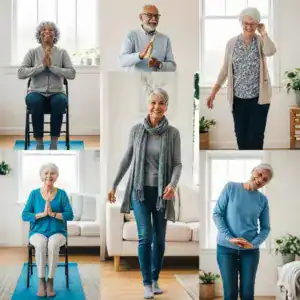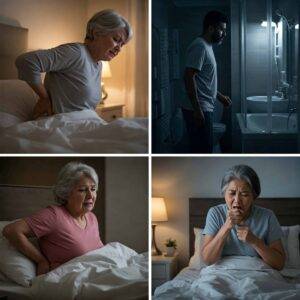Every parent has had to baby-proof their house at some point. Maybe you remember when your child was first exploring the world around them and wanted to stick their little fingers in any opening available. You had to put lids on all electrical outlets and locks on all cupboard drawers. And when the child was learning to walk and they would tumble down so often that you had to either run after them or cushion every sharp age to prevent them from hurting themselves?
Well, in older age, our bodies can fail us in a not-so-unlike fashion, therefore we need to modify the living quarters of our elderly so they are safe from accidents there. A lot of seniors spend a large chunk of their time at home and they deserve to live in an environment that is adapted to their changed needs. These modifications will make the daily challenges they have to face a bit less arduous and their golden years a lot more comfortable.
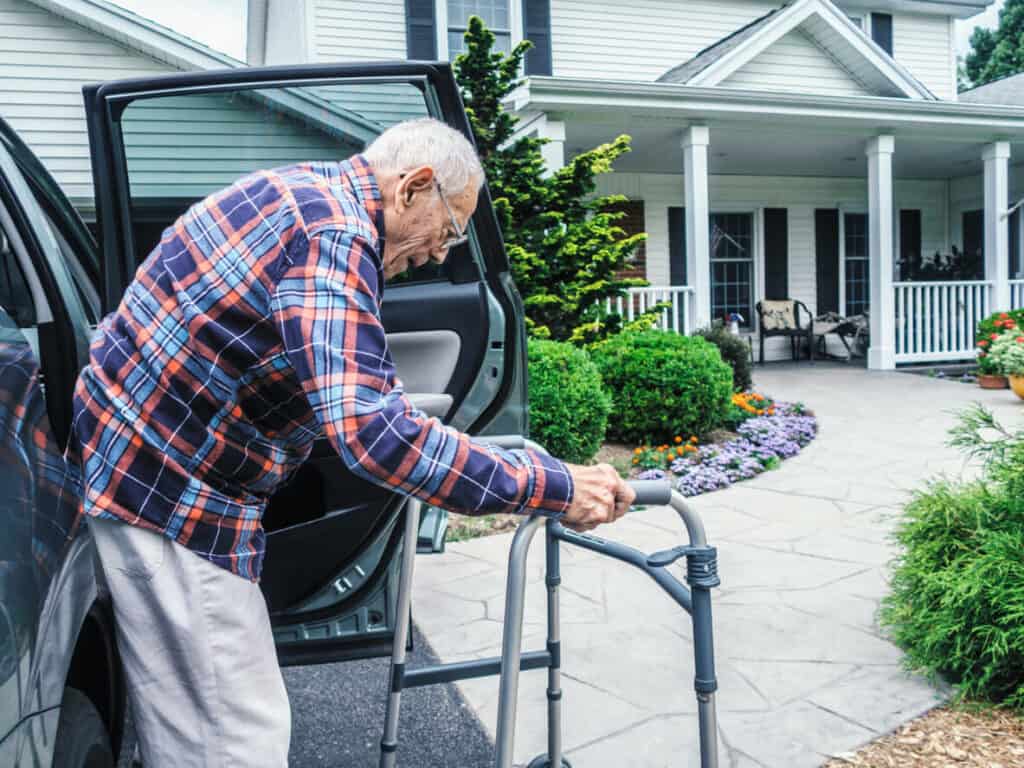
Not all seniors’ needs are the same but more often than not they experience difficulties with their motor functions, which present with an unsteady gait, trouble keeping balance, inability to stretch or reach high due to stiffened joints and shortened ligaments, worsen sight and hearing, loss or partial loss of the sense of touch.
Having an elderly loved one move in may require quite a bit of new equipment. It can feel daunting. If you are wondering where in the house to start, you can call Amy’s Eden and request an expert caregiver to come to your house and do a thorough assessment. In preparation for the visit, you can follow this home safety checklist. It will give you some tips on what you may need to adjust and why it is a good idea to do it.
Entrance area
To make the entrance not only safe but easy to access you may need to change a few things. If there are steps your elderly beloved may not be able to use this entrance with a wheelchair or a walker. Installing a wheelchair ramp costs between $100 and $200 and will give your aging loved one as well as their caregiver some freedom of movement and independence. Installing a handrail is a good idea too. You may also have to widen the front and all other doors around the house for an easier pass-through.
Floors and Pathways
As seniors are more prone to falls and the injuries they sustain can be fatal, it is a good idea to assess all floors throughout the house. The surfaces need to be non-slippery and as even as possible. It is very easy to catch your toe on the edge of a rug or to slip on a wet surface. If there are any area rugs they must be well secured to the floor and the skiddy tiles could be covered by non-skid mats.
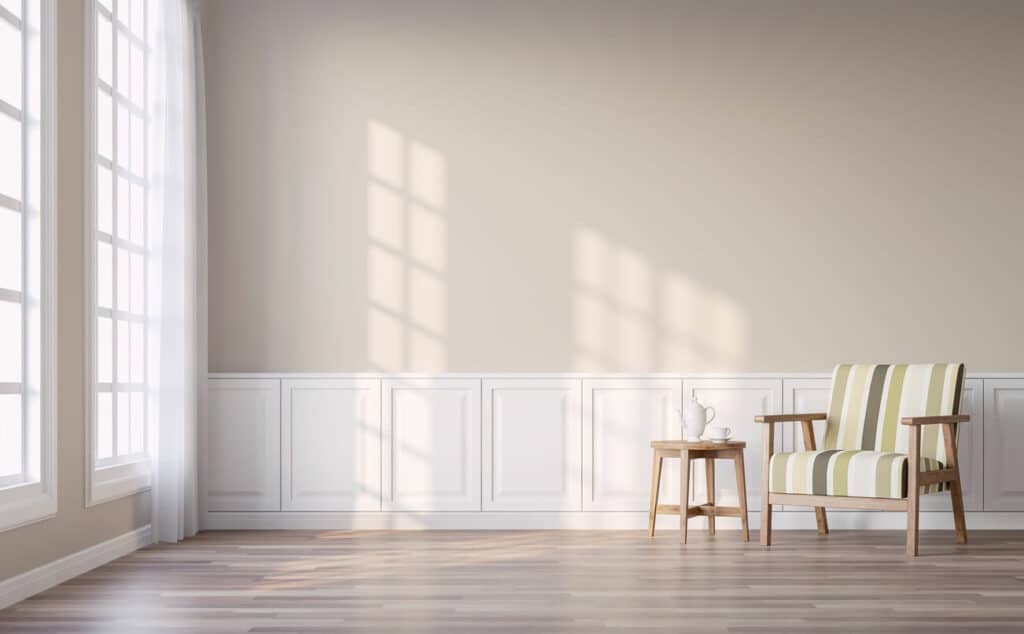
Another way to facilitate easier movement around the house is by eliminating other tripping hazards and opening up clear pathways from one area to another. Electrical cords and decorative items such as potted plants, newspaper baskets, ottomans, floor vases, etc. should be removed as they can cause an accident.
Walkways should be kept clean and sturdy and ensure that basements and stairways are closed off to help the elderly from falling, especially if your loved one has difficulty seeing.
Lights
Make sure that everywhere there is sufficient light. The better-lit a room, the less chance of bumping into a piece of furniture. When choosing lights, go for yellow, sunlight bulbs, and avoid white, fluorescent light as it may cause eye irritation. You should add additional light switches at the bottom and top of stairs, at each end of a hallway, and by each door of a room. To make it easier for your loved one at night, you can add a photocell and motion sensor lights to the bedroom and bathroom.
Stairs
If possible, the senior’s home should be on one level for more effortless movement but if there are stairs, make sure that they are non-slippery, with safety treads and a solid rail.
If the space allows it, think of installing a home elevator or a platform lift. Home elevator prices begin at $15,000 and the minimum space required for installation is 25 square feet. Platform lifts are an affordable alternative to elevators and they can also accommodate wheelchairs. They can be installed over the stairs as well as separately.
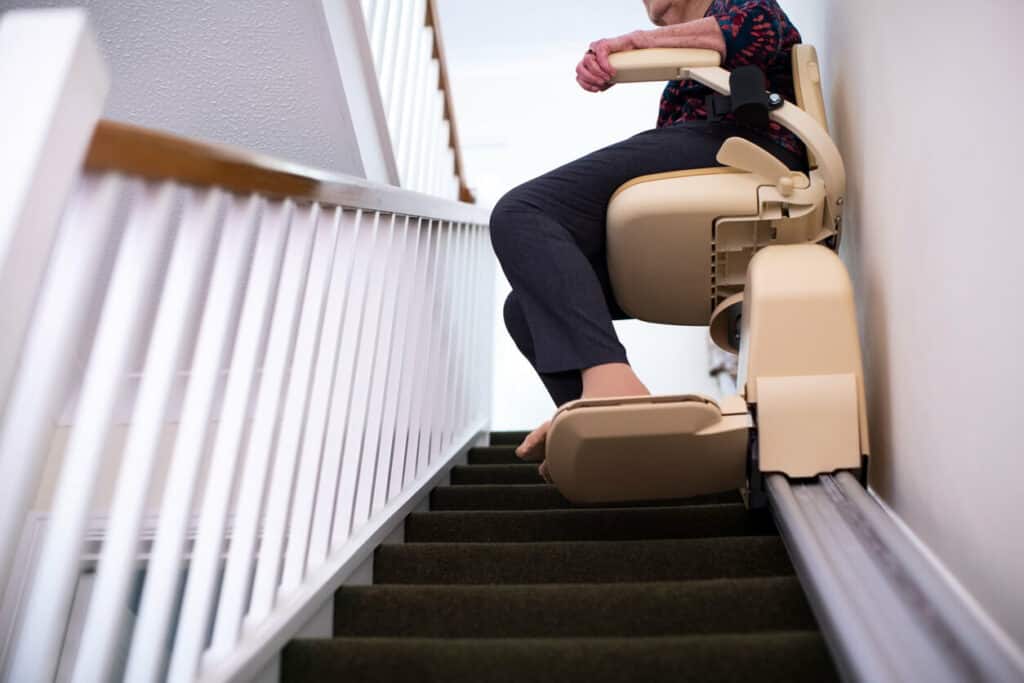
In limited spaces, a stairlift can be a useful solution. It looks like an automated chair that uses a rail. It propels the person sitting in it up the stairs or takes them downstairs. Stairlifts have the disadvantage that they can not be used by people in wheelchairs.
Bedroom
The bed should be between 18 and 23 inches high or approximately the height of a chair. The mattress should be firm, and a grab bar by the bed could be installed. The room should be clutter-free and on the nightstand, there should be a bedside lamp and switches for all the lights. A phone by the bed and some motion sensor lighting around the bed are always good ideas.
Also, remember that windows should be secured and locked, especially on the ground floor where you’re elderly loved one is likely to be living.

Bathroom
There are many dangers for seniors in the bathroom. It is wet, it is dim, and it has smooth, sleek but hard surfaces. Plus, the older we get, the more difficult it is to go in and out of a tub to have a bath or a shower. That’s why it is best to put in place a walk-in shower or a shower enclosure with an evened floor.
The shower screen or door can also present a hazard if the person loses their balance and leans or grabs them. That’s why it is best to avoid a screen and go for a fortified glass partition instead.

Additionally, it is a good idea to have a grab bar and a built-in seating area in the shower. Another grab bar by the toilet and an elevated toilet seat will create additional relief. Having a phone installed in the bathroom in case of a need for emergency assistance and choosing water tabs that are easy to turn on and off can provide further comfort.
Kitchen
Like every floor around the house, the kitchen floor needs to be non-slippery. Any area where your elderly loved one is walking needs to be checked for slippery-ness. If the floor can’t be changed, perhaps either some safety treads can be added here or you could consider purchasing some shoes with really good treads.
The cooking area should be kept free from clutter, and food should be stored properly.
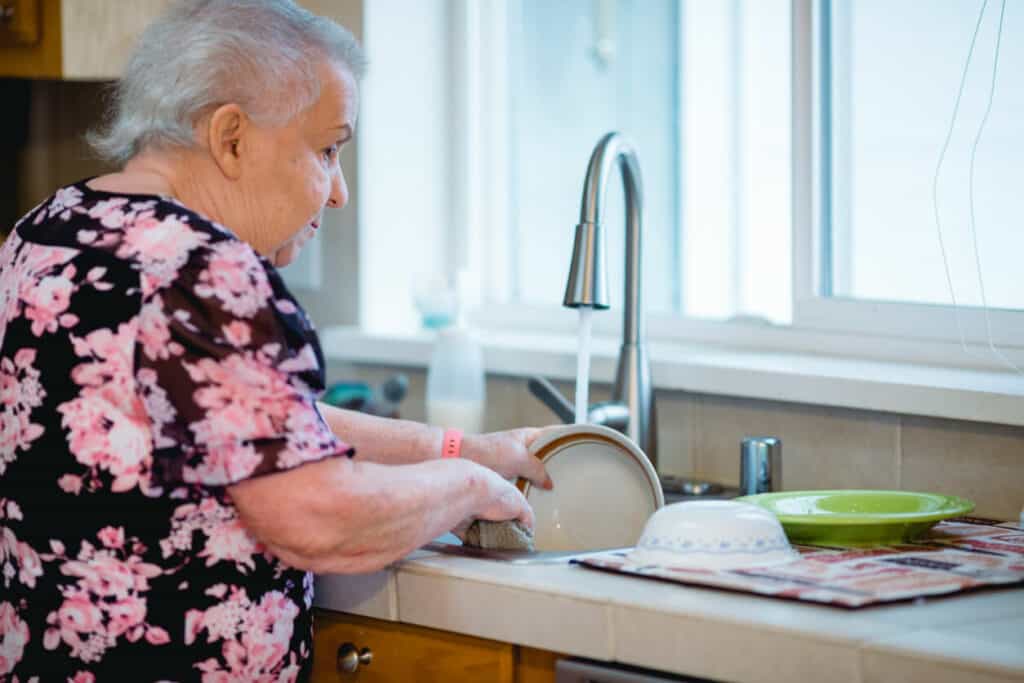
Fire hazards present more danger for the elderly as they may need more time to evacuate. Moreover, they may realize they are in danger later than the average person as their senses of smell and hearing may be diminished.
To decrease the fire risk and increase awareness, smoke detectors can be installed in the kitchen, in other rooms, and near appliances. Having a fire extinguisher in the kitchen and on all floors of the house can give you additional peace of mind.
Check on detectors regularly to ensure safety. An escape plan should be provided in case of emergencies, and a telephone number for emergency care should be kept nearby. By taking these steps, seniors can ensure their health and safety at home.
Additionally, all heaters, especially carbon monoxide heaters, should be checked to ensure they are in good working order. A new carbon monoxide detector should be installed, and the garage should be properly ventilated.
Top cabinets can be a challenge for seniors as it is difficult for them to stretch, reach or lift themselves on their toes. Therefore it is best and helps tremendously to have everything they need in the kitchen is stored at eye level and in the lower cabinets. The key is providing easy access to essentials, so drawers and pullup cabinets are the best options since they don’t require you to bend deeply to reach an item.
Family and Children
Sometimes, we choose to have our elderly loved one move in with the family. This can be both a wonderful benefit to your elderly loved one and a particularly dangerous challenge- especially if there are children living in the home. Come up with specific plans to ensure the safety of your loved one. It is important to give clear instructions to children, if they are old enough to understand, on certain activities and behaviors that are okay and not okay when your elderly loved one is present.
Examples of items on your list could include:
- Please be extra careful whenever you want to cuddle or hug ‘Grandma.’ Never run, jump, or anything of the like on ‘Grandma.’
- Walk carefully around her when she is up and moving around the house. Do not run quickly near or around Grandma, especially when she is up walking.
- Be careful how you play around Grandma- (give your children, depending on their ages, specific instructions).
- Parents or supervisors of the children need to be vigilant about maintaining constant supervision of toddlers especially if they are around their elderly loved one.
Also introducing basic family protocols will be extremely important. To help keep your elderly loved one protected and safe, ensure that everyone in the family knows to remove things such as extension cords, tools, toys, or anything that they could trip on out of the walkways.
Other Refittings
Have a thermostat switch added to a few rooms in the house, if possible. Body temperature is more difficult to maintain as we age, so giving your beloved elderly the opportunity to easily adjust and set the temperature will provide more comfort.
Keep in mind that they may find small buttons impossible to press, especially when close together, and select remote controls and phones with larger buttons. Have a list with emergency phone numbers printed in large font and put up near all phones in the house.
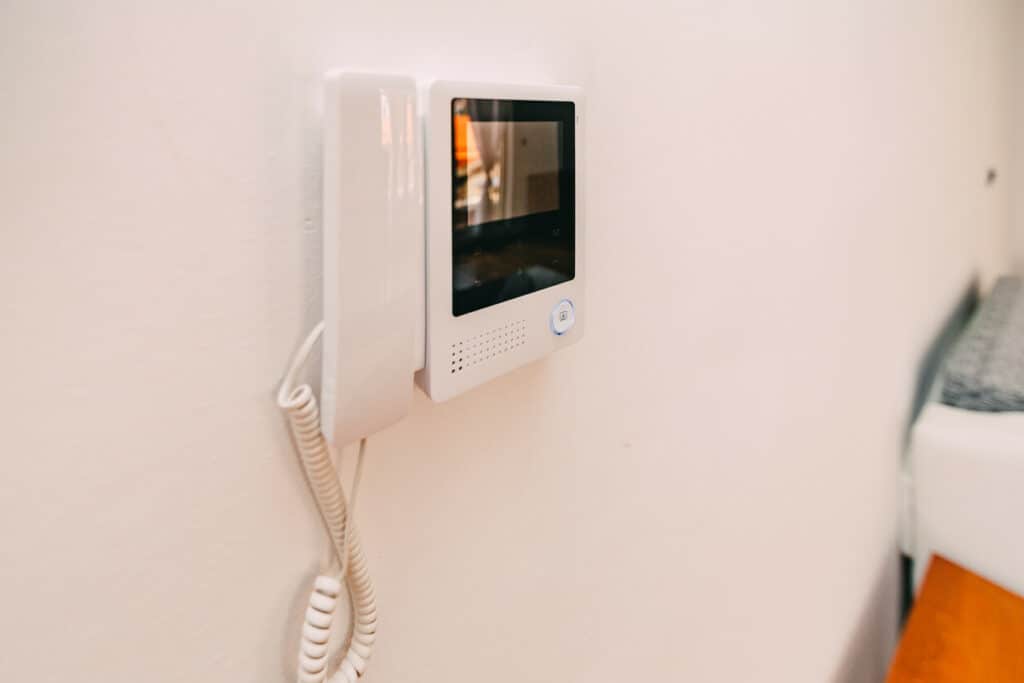
Install a burglar alarm and a video doorbell, as seniors are more vulnerable to abuse, especially if they live alone. A smart security home system that automatically locks the doors, switches on or off the thermostat or the lights, and can be commanded remotely is a good idea if the older adult is confident in using it.
Consider purchasing a monitoring device or a fall detector for your loved one and if you aren’t sure if they need one, contact us, here at Amy’s Eden. Our experts can visit your home to perform a safety assessment, and give you personalized guidance on what you need to adjust to make the house safe for your beloved elderly.
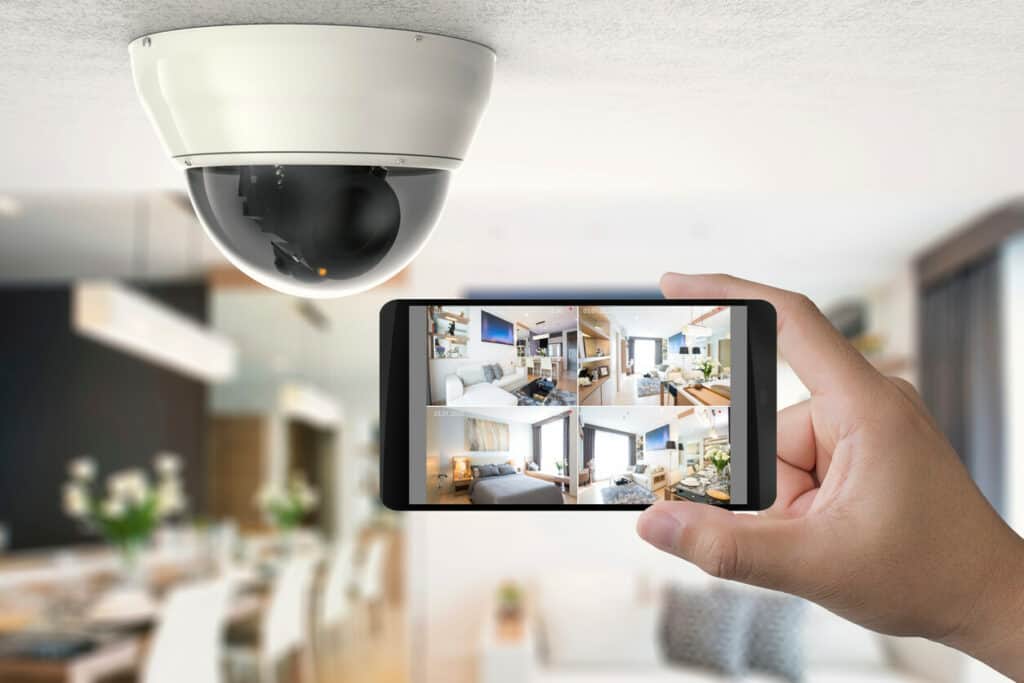
Modifying a house so that a senior can age comfortably in it may range anywhere from $500 for putting up grab bars and ramps to $50,000 for installing an elevator. If the elderly have been enrolled in a Medicare Advantage plan some of the retrofits could be paid by it. Additionally, some local or state programs may offer financial aid for other changes in the home.



